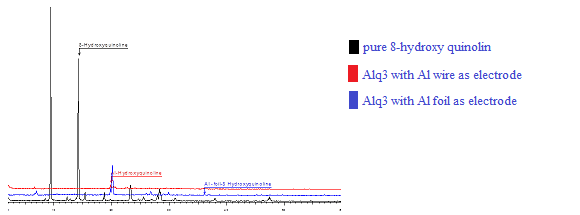
Electrochemical synthesis of Organic Light Emitting Diode(OLED) and characterizations by X-ray Diffraction and supportive techniques
Abstract
A facile and sustainable electrochemical approach towards the synthesis of  tris-(8-hydoxyquinoline)aluminium(III) (Alq3) using 8-Hydroxy quinoline as a ligand is presented. The synthesis has been done at three different conditions (a) 0.015M of 8-Hydroxy quinolin in 50% methanol, at   pH 7 for 24 hours (b) 0.0303M of 8-Hydroxy quinolin in 40% methanol at pH 1 for 48 hours (c) 0.0317M of 8-Hydroxy quinolin in 50% methanol at pH 2 for 24 hours. The potential was applied 1.5 V and 12 .0 V respectively. Simple room temperature electrolysis method has been employed, where Al wire as well as Al foil was used as a sacrificial anode for Al3+ ion source and platinum wire as a cathode. Tris-(8-hydoxyquinoline) aluminum (III) (Alq3) was synthesized for the first time by direct dissolution of Al3+ into the solution of 8-Hydroxy quinoline from Al electrode in the electrochemical cell. The structural characterizations have been done by using Single X-ray diffraction and Powder X-ray diffraction (XRD) and TGA techniques. Complexes of Aluminum with 8-Hydroxyquinoline have a wide applications to material science as organic light emitting diode (OLED).
Keywords
tris-(8-hydoxyquinoline); aluminum(III); OLED; Al wire; platinum wire
 ISSN 2321-4635
ISSN 2321-4635